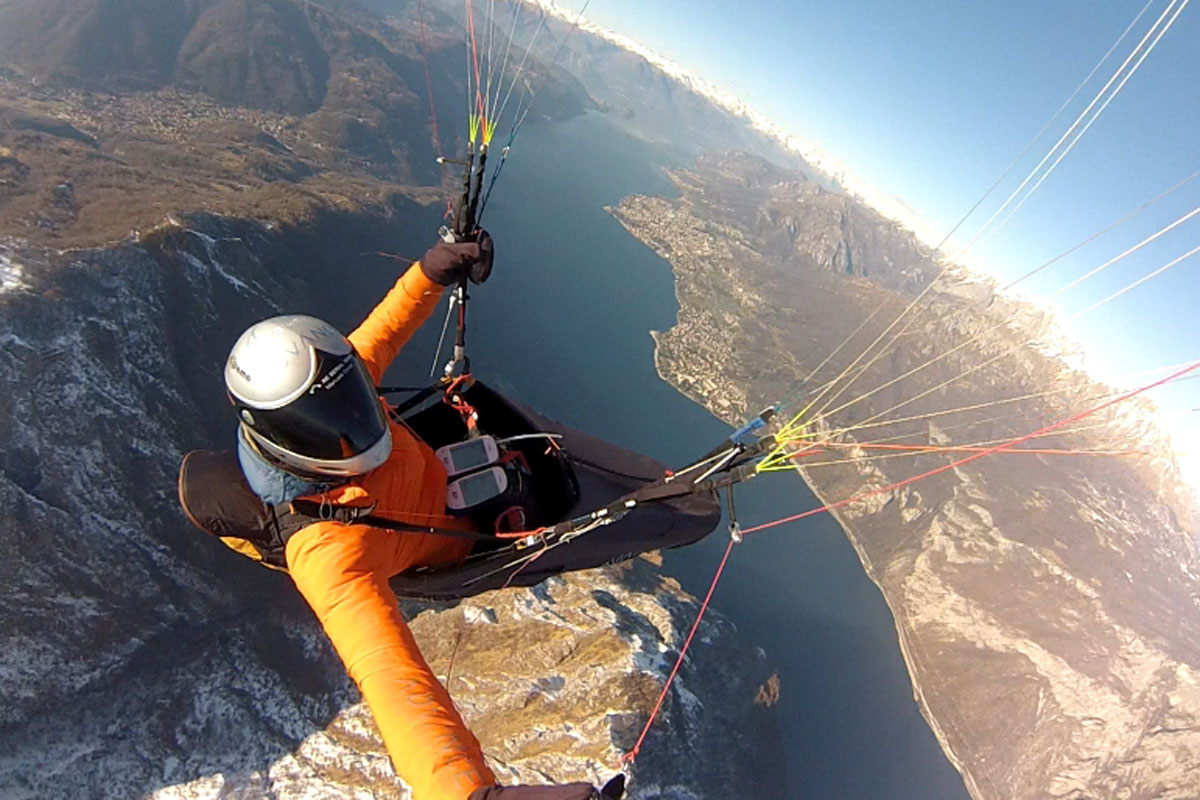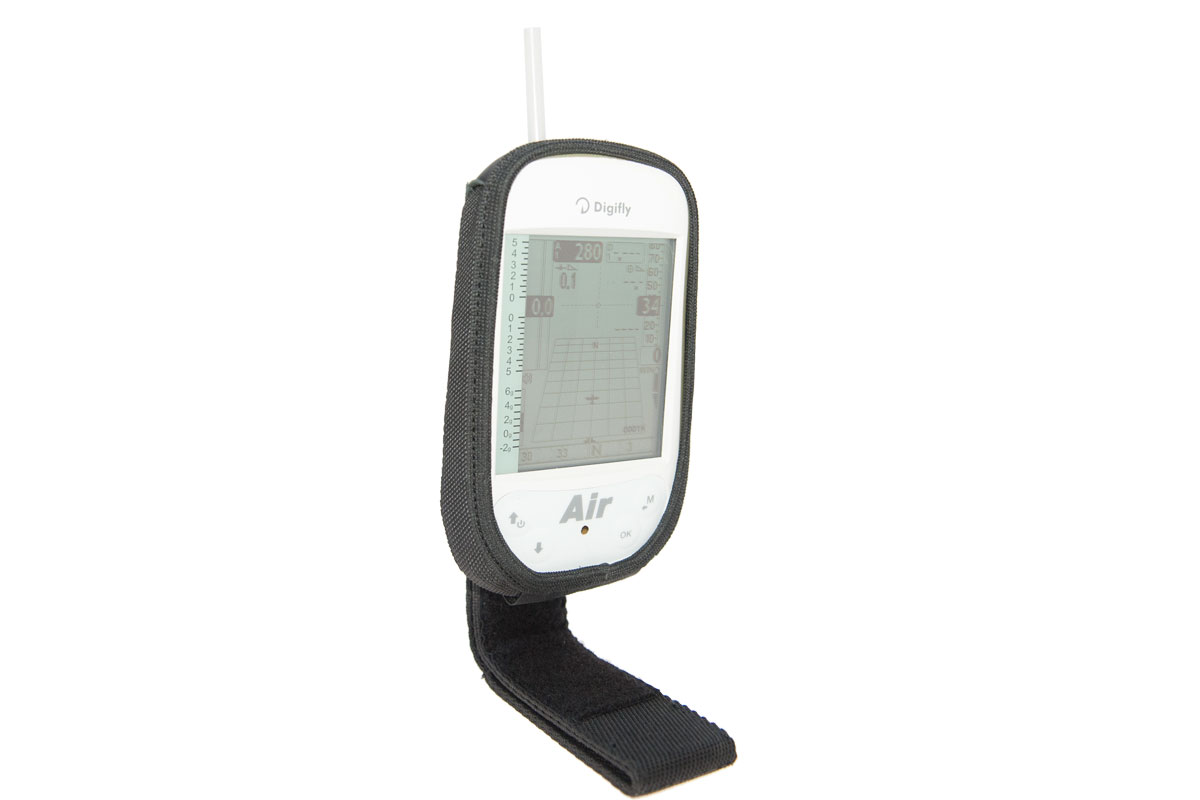ASI
Digifly Air Speed Indicator (Pitot Tube) for Paragliding
Great news for all paraglider pilots who until now, did not have the opportunity of take full advantge of using an ASI (air speed indicator) when flying.
It has been generally considered that is was not possible to use an ASI on a paraglider. This was due to the previous generation of sensors not having the required sensitivity at low speeds. So when using an ASI on a slow moving wing, like a paraglider, the information provided was prone to inaccuracy.
The sensors used by Digifly on the AIR BT ASI are extremely sensitive and are accurate even at very low speeds; they pick up readings at 5 km/h (3mph) and are accurate to 0.1 km/h.
The Digifly sensors combined with specific "autotunning” algorithms on the software, mean that the ASI doesn't require any special placement on your wing, or harness in relation to the air flow. This makes the Digifly ASI system perfect for use with a paraglider.
For paragliding, use of "speed to fly" is essential, especially with a relatively less efficient wing (such as a paraglider). It allows you to know, at any given moment, the exact optimal speed to fly at, for all situations; to fly safely and with the best possible performance.
If you fly with an the Digifly ASI, you will be able to take advantage of:
Air speed (IAS/TAAS)
Speed to Fly
Speed Difference
This feature shows you what the headwind component is at any given time, without needing to make a 360° turn. This feature is very useful during a landing approach, when you are flying low and can't pu in an extra 360° turns. To see what the wind direction is, all you need to do is take a look at your “Speed Difference” reading on your display to immediately know whether you are flying with a head or tailwind, allowing you to correctly set up your landing direction.
Pitot Tube Assisted Wind Meter
The ASI allows for your wind speed and direction information to be calculated faster and it's more precise.
Vario Function with Total Energy Compensation (TECC)
Being able to have the Total Energy Compensation feature, enables your instrument to clearly distinguish whether you are climbing because you are in a real thermal or if you are climbing due to a change in your speed. This means that hearing a thermal beep just when you change your speed is gone; there is no more information about “false” thermals.
Stall Alarm
McCready and Equivalent McCready Functions
Netto Vario
Polar
You will find further details in the Digifly AIR BT owner’s manual.
Date: 12/03/2018
Tags: asi models pitot tube settings
Digifly News
XC Magazine's review of the Air BT
In case you haven't seen it check out XC Magazine's review of the Digifly Ait BT pitot here. It's great that its getting the recognition as a paragliding instrument with...
Date: 20/08/2019
MoreLatest Air BT and Air BT pitot firmware update details
Digifly AIR-BT & AIR-BT-Pitot New 506a firmware Our latest firmware, version 506a-019, is now available; the most important new features are: Distance Calculator...
Date: 20/08/2019
Tags: competitions firmware manual upgrade
MoreASI
Digifly Air Speed Indicator (Pitot Tube) for Paragliding Great news for all paraglider pilots who until now, did not have the opportunity of take full advantge of using...
Date: 12/03/2018
Tags: asi models pitot tube settings
MoreUKPPG Air Demo
UKPPG PPG Flying School in Cambridgeshire has a new Digifly Air BT + Integrated ASI (pitot tube) available for demo. See UKPPG PPG Flying School contact details here....
Date: 05/02/2018
Tags: asi schools
MoreAuto Silence Setting
By default, the AIR is silent at take off (until recording your flight), but if you want to test the vario sensitivity go to: VARIOMETER SETUP \n21. AUTV & turn to...
Date: 04/02/2018
Tags: settings
More


